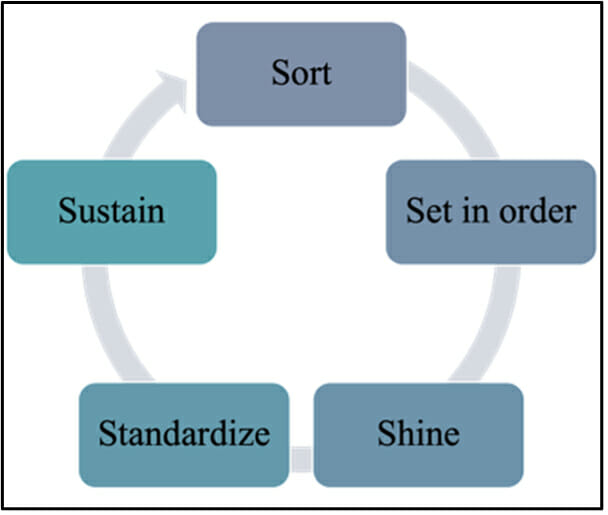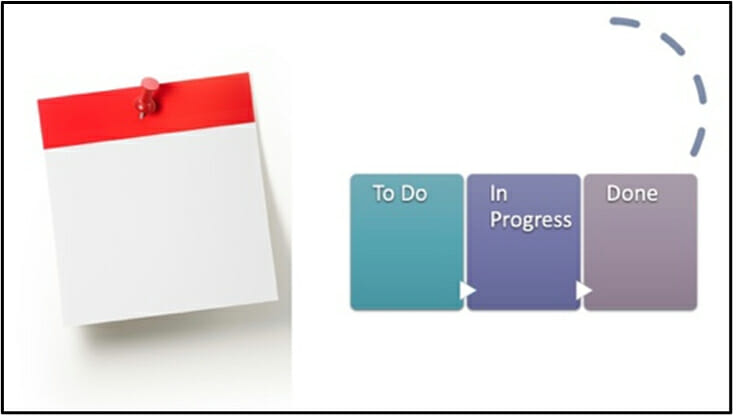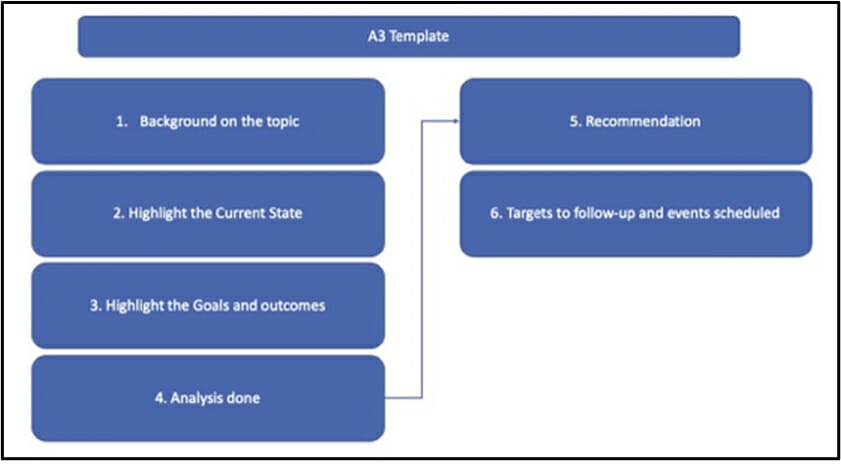Lean Construction – A Tool to Drive Productivity

Sneha Kumari, MBA, Six Sigma, is the manufacturing SME at New Gen Architects
As a Lean and Six Sigma Leader, I have highlighted below the importance of using Lean tools and inculcating the culture to address productivity issues facing modular construction.
According to a McKinsey report1, the construction sector overall accounts for a significant 13% of the global GDP. However, despite its substantial contribution, the sector’s annual productivity growth has only witnessed a meager 1% increase over the past two decades. This starkly contrasts with the 2.8% growth observed in the world economy and the 3.6% growth seen in the manufacturing sector. Additionally, modular construction2 could claim $130B of the U.S./Europe market by 2030, saving $22B annually and bridging a $1.6T productivity gap. Based on these findings, it becomes crucial for modular industries to prioritize operational efficiency to deliver maximum value to their customers.
While there are undoubtedly a multitude of causes contributing to this lag in productivity—both internal and external factors—there are specific internal factors that can be addressed to drive incremental improvements in efficiency and ultimately enhance productivity levels. In the face of labor shortages in the industry, enhancing productivity and efficiency with existing systems and processes becomes crucial. Lean methodologies offer valuable tools to achieve these goals.
Implementing a lean culture brings transformative impact by addressing operational challenges, reducing waste, and fostering continuous improvement. It emphasizes respect for people and delivers exceptional customer value. Lean breaks down silos, optimizes operations, and creates a proactive work environment.
Eliminating waste is a primary focus of lean methodology in construction, targeting defects, overproduction, waiting, non-utilized skills, transportation, inventory, motion, and over-processing. A range of tools can be utilized to tackle different types of waste in processes, effectively minimizing or eliminating their impact. This article highlights a few of these tools and the benefits of using them.3 But before we get into the tools that can be leveraged, it is important to note that you cannot improve what you cannot visualize. Exactly why it is important to map your current value stream.
Value Stream Mapping (VSM) is a team-based methodology that involves mapping out each step of the working process and identifying waste aka areas for improvement. VSM focuses on adding value and eliminating waste to achieve optimal outcomes. By visualizing the entire process and addressing non-value-added steps, teams can enhance efficiency and create a more streamlined workflow. This can be accomplished using simple colored sticky notes or any digital tool. However, for optimal engagement, it is highly recommended to conduct the exercise using sticky notes, ensuring active participation from the team during the initial mapping process. These mapping exercises can be eye-opening, revealing the significant amount of back-and-forth that teams go through before achieving a desired outcome. For example, traveling to different stations to get material and tools to finishing building the steel trusses because the materials are not close to the point of use.
Once you know the current state and the wastes highlighted in the process, you can start with one of the foundational tools of Lean which is 5S (Figure 1). The 5S methodology promotes workplace organization and efficiency by focusing on five key steps.

Figure 1. 5S Model.
- First, “Sort” involves determining what is necessary and removing anything that is not, reducing clutter and improving safety.
- Next, “Set in Order” establishes designated places for everything, streamlining workflow and reducing time wasted searching for materials.
- The third step, “Shine,” emphasizes consistently keeping the workspace clean and operational, preventing messes and equipment issues.
- “Standardize” involves creating standardized processes facilitating continuous improvement.
- Finally, “Sustain” emphasizes the importance of maintaining implemented processes.
Implementing the 5S methodology offers numerous benefits extending beyond the desire for a clean and organized work environment. It enhances safety by reducing hazards and the risk of accidents caused by cluttered workspaces. It improves the quality of outcomes by allowing individuals to focus on their work without distractions. Additionally, 5S enhances productivity as workers can easily locate materials and information, optimizing their time spent on value-adding tasks. Lastly, it contributes to better project scheduling through pull planning and consistent organization, ensuring materials are available when and where they are needed.
By embracing 5S principles, teams can achieve improved safety, quality, productivity, and adherence to project schedules. The investment of time and effort in creating an organized workspace pays off significantly in advancing towards project objectives.
Another valuable tool to visualize the team’s work and provide a quick overview of ongoing and completed tasks is a Kanban board (Figure 2). This is a project management system in Lean design and construction that enhances process efficiency through visualizing the workflow on a Kanban board.
This pull system aligns with Lean principles by starting work precisely where and when needed. By using the Kanban Board, teams can effectively visualize, plan, and set Work in Progress limits for different project stages. This exercise involves visualizing the workflow, setting Work In Progress limits, managing flow, conducting regular meetings, and collaboratively improving processes based on feedback.
The Kanban Board consists of sections like “To Do”, “In Progress”, and “Done”. These boards can exist in physical boards or even on digital tools as preferred by teams. By adhering to these practices, teams can optimize workflow, achieve continuous improvement, and deliver greater value to stakeholders.
While utilizing the Kanban board for work management, encountering complex problems that require in-depth analysis and critical problem-solving calls for another effective tool called A3 thinking. This exercise can be conducted on a simple sheet of paper or digitally, allowing for a deeper dive into the problem and facilitating a structured problem-solving approach.
A3 problem solving is a powerful Lean methodology that empowers teams to tackle problems collaboratively and make informed decisions. The essence of A3 thinking lies in laying the entire problem onto a single sheet of paper, allowing the team members to collaborate, analyze, and rationalize their problem-solving process. This approach not only enhances problem- solving process but also generates detailed written explanations that can be shared with senior management, fostering their confidence in the team’s capabilities. It guides the team through a systematic approach, leveraging the available tools and resources to arrive at the most effective countermeasure.

Figure 2. Kanban board

Figure 3. A3 template.
To ensure a thorough and well-rounded analysis, an A3 report (Figure 3) is typically filled out by a designated champion who gathers input and insights from team members. This collective knowledge and expertise contribute to a more holistic understanding of the problem and increase the likelihood of a satisfying outcome.
Before diving into the A3 process, it is crucial to accurately identify and define the problem at hand. In the context of design and construction, challenges such as unexpected lead times or communication breakdowns are common. By addressing key questions and clarifying the problem’s nature, teams can set the stage for successful A3 problem solving and navigate the path towards resolution.
It is important to note that Lean is a mindset and a culture that will need to be fostered over time and instilled with leadership leading it for others to follow. It is extremely important to manage and tread this change carefully. Organizations should identify and empower ambassadors or change agents who can champion this transformation. Respecting all employees and valuing their contributions is essential in creating a supportive culture. Investing in upskilling initiatives and providing opportunities for continuous learning demonstrates the recognition that people are the most valuable asset of a company.
By establishing mutual trust between management and employees, organizations can cultivate a collaborative atmosphere
that encourages innovation and growth.
More from Modular Advantage
AI, Faster Sets, and Automation: The Future of Modular is at World of Modular
While the modular building industry has long known that it can be an effective solution to increase affordable housing, the word is slowly spreading to more mainstream audiences. Three presentations at this year’s World of Modular in Las Vegas hope to provide insight and direction for those seeking a real solution to the crisis.
An Insider’s Guide to the 2025 World of Modular
The Modular Building Institute is bringing its global World of Modular (WOM) event back to Las Vegas, and with it comes some of the industry’s best opportunities for networking, business development, and education. Over the course of the conference’s four days, there will be numerous opportunities for attendees to connect, learn, and leverage event resources to get the most out of the conference.
Affordable Housing Now: The Industry’s Best Bring New Solutions to World of Modular
While the modular building industry has long known that it can be an effective solution to increase affordable housing, the word is slowly spreading to more mainstream audiences. Three presentations at this year’s World of Modular in Las Vegas hope to provide insight and direction for those seeking a real solution to the crisis.
Opportunities for Innovation in Modular Offsite Construction
Modular Offsite Construction has already shattered the myth that it only produces uninspired, box-like designs. Architectural innovations in module geometry, configurations, materials, and products make it possible to create visually stunning buildings without sacrificing functionality or efficiency.
Safe Modular Construction with Aerofilm Air Caster Transport
In collaboration with Aerofilm Systems, Heijmans developed innovative skids using air caster technology for moving modules easily and safely. These pallets are equipped with an auto-flow system, making operation extremely simple.
Miles, Modules, and Memes: Building a Modular Network One Flight at a Time
At the end of the day, social media is just another tool for building connections, and like any other tool, needs to be used skillfully to work properly. Use social media thoughtfully, and it will open doors to real opportunities and relationships you didn’t even see coming.
Falcon Structures: Thinking Inside the Box
Some of Falcon’s latest projects include creating container solutions for New York’s Central Park and an East Coast professional baseball team. More and more, Falcon is shipping out container bathrooms and locker rooms to improve traditionally difficult work environments, like those in oil and gas or construction.
UrbanBloc—From Passion to Industry Leader
UrbanBloc specializes in three main categories or markets – what they call “Phase 0” projects, amenities, and urban infill. Clients are often attracted to shipping containers because from a real estate perspective they are considered an asset. Having the flexibility to move and transport these assets allows owners to respond to different circumstances in a fluid manner that they can’t get with standard construction.
The Hospitality Game-Changer
“Hospitality is about more than just providing a service – it’s about delivering an experience,” says Anthony Halsch, CEO of ROXBOX. “And that’s where containers thrive. They allow us to create spaces that are unique, efficient, and sustainable.”
Container Conversions Counts on Simplicity to Provide Critical Solutions
Container Conversions has fabricated and developed thousands of containers for varied projects, including rental refrigeration options, offices, kitchens, temporary workplace housing, and mobile health clinics.










